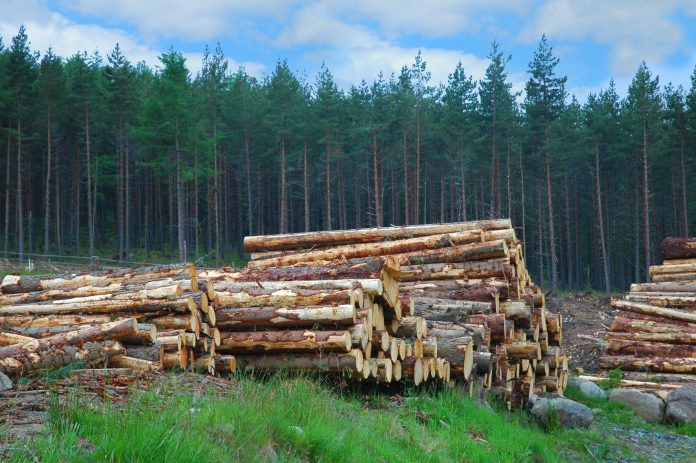A new pilot project has secured funding to increase the use of home-grown timber in UK construction and develop the country’s first engineered timber manufacturing plant
A consortium of partners – comprising of Construction Scotland Innovation Centre (CSIC), Edinburgh Napier University (ENU) Centre for Offsite Construction and Innovative Structures (COCIS), Scottish Forestry, Confederation of Forest Industries (Confor), and SNRG – has secured funding from Innovate UK’s Sustainable Innovation Fund to prove the business case for using Scottish timber to create the structural elements of buildings.
The initiative will manufacture the first Scottish-sourced cross laminated timber (CLT) and nail laminated timber (NLT) housing unit – including wall, roof, and floor – using the UK’s only vacuum press at CSIC’s 35,000 sq ft innovation factory in Hamilton.
The demonstrator project could ultimately lead to the mainstream use of home-grown timber in Scotland and the rest of the UK construction, as well as the development of the country’s first engineered timber manufacturing plant.
Set to complete by the end of 2020, the CLT and NLT superstructure will be showcased at next year’s COP26 United Nations conference on climate change.
‘Reduce our reliance on imported timber’
Sam Hart, innovation manager at CSIC, said: “The project is an important milestone in the move towards more mainstream use of home-grown timber in the UK’s construction sector, the majority of which is grown in Scotland.
“Research has proven that, with the right treatment and processing, our timber can be used for a wide variety of higher-value purposes beyond its relatively limited set of current applications.
“Through its increased use in commercial construction and housebuilding, we can also reduce our reliance on imported timber.
“The next step from there will be to make the industry aware of this transformational potential and make it a reality.
“Greater use of our natural and renewable resources will deliver a range of environmental, cost, and economic benefits for Scotland and the wider UK. COP26 is a once in a generation opportunity to showcase what can be achieved.”
Benefits of home-grown timber
Among a range of benefits, using more home-grown timber is expected to significantly lower costs for the construction industry – initial figures suggest a potential reduction of as much as 10% compared to imported CLT – cut carbon emissions through reduced need for transportation, and open new markets to the UK-based timber sector.
Professor Robert Hairstans, head of the Centre for Offsite Construction and Innovative Structures, commented: “Scotland has the renewable resource, internationally recognised expertise and technical capabilities necessary to be at the forefront of a new approach to delivering a sustainable built environment in response to the climate crisis.
“Leveraging this potential Scotland can deliver the human capital and built assets necessary to form the fabric of a circular economy.
“Digitally enabled, these assets can instigate an ecosystem of organic growth unlocking the potential of a sector that can lead the way in making the new normal a sustainable future.”
Jason Hubert, head of business development at Scottish Forestry, added: “Scottish Forestry, and the wider Scottish Government, recognises the importance of increasing Scottish timber in construction as a means of storing carbon for the long term as well as generating green jobs for the country.
“This project will provide the springboard for the sector to start manufacturing a great engineering product which can be used in large-scale buildings using home-gown timber.
“The Scottish Government is committed to getting more Scottish timber into construction and aims to increase the current 2.2 million cubic metres to 2.6 million cubic metres each year by 2021/2022.”














